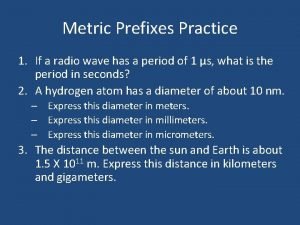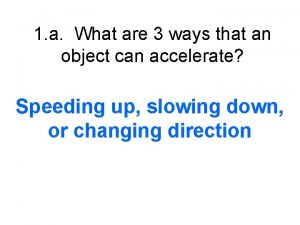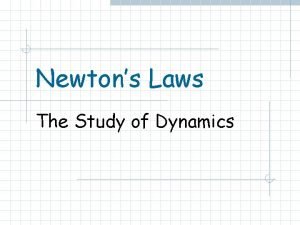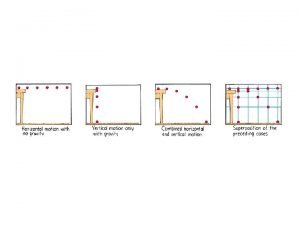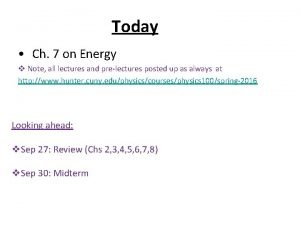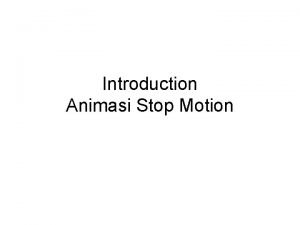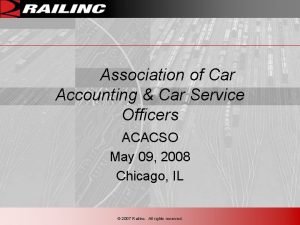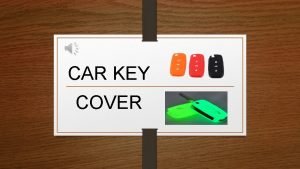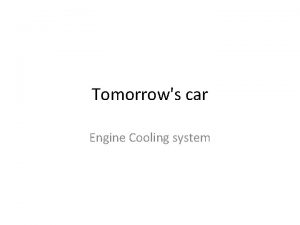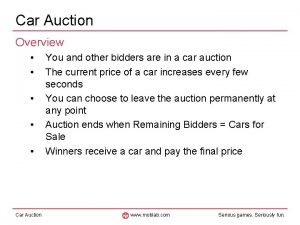Do Now A car accelerates from a stop















- Slides: 15

Do Now A car accelerates from a stop to 45 m/sec in 4 sec. Explain why the car must have been accelerating at exactly 11. 25 m/sec 2 at some moment.

Mean Value Theorem, Antiderivatives Section 4. 2 b

Mean Value Theorem If is continuous at every point of the closed interval and differentiable at every point of its interior , then there is at least one point c in at which There is at least one point where the instantaneous slope is equal to the average slope…

Let me put it another way… The MVT says that somewhere between points A and B on a differentiable curve, there is at least one tangent line parallel to chord AB: Tangent and chord are parallel Slope B Slope A 0 a c b

Do Now A car accelerates from a stop to 45 m/sec in 4 sec. Explain why the car must have been accelerating at exactly 11. 25 m/sec 2 at some moment. The average acceleration of the car over the interval is 45/4 = 11. 25 m/sec 2. By the MVT, the instantaneous acceleration of the car must have been that same value at least once during the interval…

More Practice with the MVT For each of the following, (a) show that the given function satisfies the hypotheses of the MVT on the given interval. (b) Find each value of c as a solution of the MVT. à The function is continuous on [0, 2] and differentiable on (0, 2) Can we interpret this result with a graph? ? ?

More Practice with the MVT For each of the following, (a) show that the given function satisfies the hypotheses of the MVT on the given interval. (b) Find each value of c as a solution of the MVT. à The function is continuous on [2, 4] and differentiable on (2, 4) The graph? ? ?

A corollary of the MVT Functions with are Constant If at each point of an interval I, then there is a constant for which for all in I.

Which leads to another corollary Functions with Same Derivative Differ by a Constant If at each point of an interval I, then there is a constant that for all in I. Let’s see this one graphically… à What if the derivative of two functions is 2 x? ? ? such

Applying this new tool Find the function whose derivative is whose graph passes through the point. and has the same derivative as So must equal Use the given point to identify C: (C a constant)

Definition: Antiderivative A function is an antiderivative of a function if for all in the domain of. The process of finding an antiderivative is called antidifferentiation.

More Practice Problems Find all possible functions with the given derivative.

More Practice Problems Find all possible functions with the given derivative.

More Practice Problems Find the function with the given derivative whose graph passes through the point P. All possible functions with this derivative: Solve for C: Final answer:

More Practice Problems Find the function with the given derivative whose graph passes through the point P. All possible functions with this derivative: Solve for C: Final answer:
 Marissa's car accelerates uniformly
Marissa's car accelerates uniformly A car of mass 1000 kg accelerates
A car of mass 1000 kg accelerates If car a passes car b, then car a must be ____.
If car a passes car b, then car a must be ____. One stop teacher shop
One stop teacher shop De lin institute of technology
De lin institute of technology Stop it now modules
Stop it now modules What is the acceleration of free fall
What is the acceleration of free fall Describe how a baseball player accelerates
Describe how a baseball player accelerates Describing and measuring motion worksheet
Describing and measuring motion worksheet Normal force
Normal force A rocket of mass 12000 kg accelerates vertically
A rocket of mass 12000 kg accelerates vertically A teacher applies a force to a wall and becomes exhausted.
A teacher applies a force to a wall and becomes exhausted. Section 2 acceleration answer key
Section 2 acceleration answer key Natalie accelerates her skateboard
Natalie accelerates her skateboard Now i see it now you don't
Now i see it now you don't A 1000 kg car and a 2000 kg car is hoisted the same height
A 1000 kg car and a 2000 kg car is hoisted the same height
